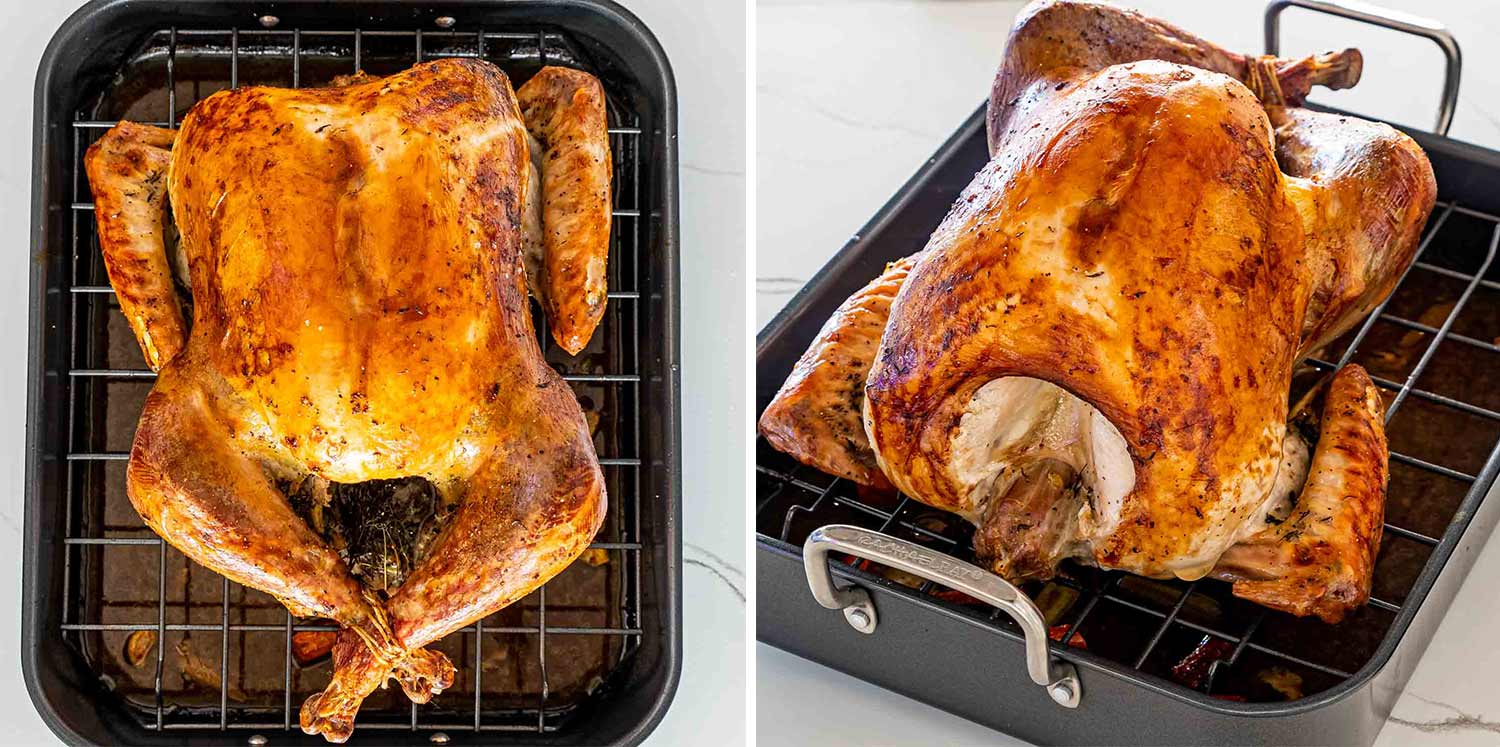How to Roast a Turkey – learn easy techniques to perfectly roast a turkey. Step by step instructions from start to finish.
Ah, the Thanksgiving turkey. A centerpiece of the holiday feast it holds the power to bring families together and fill bellies with deliciousness. But amidst the excitement, a question often arises: to cover or not to cover? This seemingly simple dilemma has sparked countless debates and divided turkey enthusiasts for generations.
Fear not, fellow culinary adventurers, for we shall delve into the depths of this culinary conundrum and emerge with the ultimate answer.
The Case for Covering: A Journey to Moistness
Covering your turkey during the initial stages of cooking is like giving it a warm hug. The foil or lid traps moisture, creating a gentle steam bath that keeps the bird juicy and tender. This is especially crucial for the breast, which tends to dry out more quickly than the dark meat.
Benefits of covering:
- Enhanced moisture: The trapped steam keeps the turkey from drying out, resulting in a succulent and flavorful bird.
- Even cooking: Covering helps to distribute heat more evenly, ensuring that all parts of the turkey cook at the same rate.
- Reduced splattering: No one wants to clean a splatter-covered oven, and covering the turkey helps to minimize this mess.
When to cover:
- For the majority of the cooking time: This ensures that the turkey stays moist and cooks evenly.
- When using a roasting rack: Covering the turkey with foil creates a mini-oven around it, helping to trap heat and moisture.
The Case for Uncovering: The Quest for Crispy Skin
While covering the turkey is essential for maintaining its moisture, there comes a time when the foil must come off This is the moment when we unveil the golden prize: crispy skin.
Uncovering the turkey allows the skin to directly interact with the hot oven air, promoting browning and crisping. This final step transforms the turkey from a juicy bird to a culinary masterpiece.
Benefits of uncovering:
- Crispy skin: The direct exposure to heat allows the skin to achieve a beautiful golden brown color and a satisfyingly crispy texture.
- Flavorful browning: Uncovering the turkey allows for deeper browning, which adds depth and complexity to the flavor.
- Visually appealing presentation: A beautifully browned turkey is a sight to behold, making it the star of the Thanksgiving table.
When to uncover:
- During the last 30-45 minutes of cooking: This allows ample time for the skin to crisp up without overcooking the meat.
- When using a roasting pan: Uncovering the turkey allows for better heat circulation and browning.
The Verdict: A Tale of Two Techniques
So, to cover or not to cover? The answer, like many things in life, is not a simple yes or no. It depends on your desired outcome and the specific cooking method you’re using.
If your primary concern is keeping the turkey moist, then covering it for most of the cooking time is the way to go. This is especially true for larger turkeys or those cooked at higher temperatures.
However, if you’re yearning for that crispy, golden skin, then uncovering the turkey towards the end of the cooking process is essential. This allows the skin to brown and crisp up without sacrificing the juiciness of the meat.
Ultimately, the choice is yours. Experiment with different techniques and find what works best for you and your taste buds. Remember, there’s no right or wrong answer, just a delicious turkey waiting to be enjoyed.
Frequently Asked Questions: Unraveling the Mysteries of Turkey Cooking
1. Do I have to cover the turkey the entire time it’s cooking?
No, you only need to cover the turkey for the majority of the cooking time. Uncover it during the last 30-45 minutes to allow the skin to crisp up.
2. What’s the best way to cover a turkey?
You can use foil, a roasting bag, or a covered roaster. Each method has its pros and cons, so choose the one that best suits your needs.
3. How do I know when the turkey is done cooking?
Use a meat thermometer to check the internal temperature of the thickest part of the thigh. It should reach 165°F.
4. What should I do if the turkey starts to brown too much?
If the turkey starts to get too brown, you can tent it loosely with foil to protect the skin from burning.
5. Can I cook a turkey without covering it?
Yes, you can cook a turkey without covering it. However, it’s more likely to dry out, so it’s important to baste it frequently.
Additional Resources: Your Culinary Toolkit
- Food Network’s guide to covering a turkey: https://www.foodnetwork.com/thanksgiving/thanksgiving-turkey/when-cooking-turkey-do-you-cover-it
- Quora discussion on covering a turkey: https://www.quora.com/Should-I-cover-a-turkey-when-cooking-it
- Tips for cooking a juicy turkey: https://www.tasteofhome.com/article/how-to-cook-a-turkey/
Now, go forth and conquer the Thanksgiving turkey! With these tips and tricks in your culinary arsenal, you’re sure to create a masterpiece that will leave your guests gobbling with delight.
Uncover And Finish Roasting

Continue roasting for an additional 1½ hours until the turkey turns golden brown and is fully cooked inside. You can baste it every 30 minutes if preferred. When the internal temperature of the turkey reaches 180°F for the thigh meat and 165°F for the breast, it is done.
How To Roast A Turkey
Before starting, you’ll need to prepare your turkey for roasting. Make sure to remove any packaging from it and the bag of giblets from inside the cavity. Pat dry the skin with paper towels, this promotes browning and crisping.
Stabilize the turkey during carving by tucking the wing tips under the body; this also makes carving the breast easier. Tie the legs together with kitchen twine.
